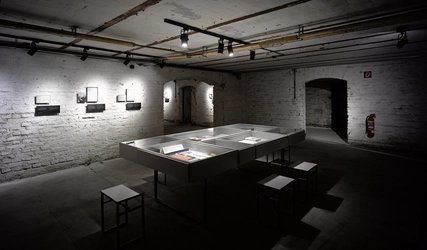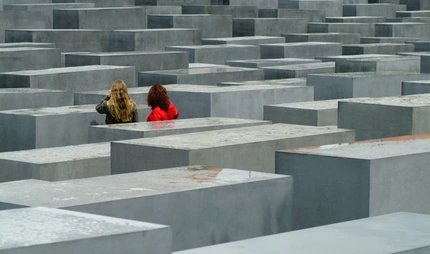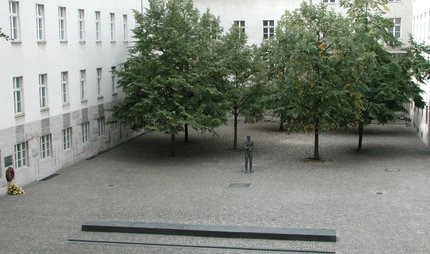
SA-Gefängnis Papestraße (SA Prison Papestraße)
One of the first concentration camps
The SA Prison Papestraße tells of the Nazi's earliest victims and puts faces to the names of those people imprisoned here between March and December 1933.
The SA prison on Papestraße remembers the earliest victims of the Nazi regime. This is a unique memorial with well-preserved cells. Behind thick walls, you get a vivid insight of the events in 1933. During that period, the Sturmabteilung (SA), the Nazi paramilitary wing, uses these barracks as a concentration camp. Between March and December 1933, the SA imprisons Jews and people opposing the regime. In these dark cellars in the Tempelhof-Schöneberg area of Berlin, you truly feel the suffering of the detainees.

1933 - A year of mass arrests in Berlin
Hitler sweeps to power in January 1933, and the SA soon begin to raid, making many arrests. A temporary prison is established in a former railway barracks. By December of that year, thousands are in prison, some of them for months. Figures show that around 30 of them die after ill-treatment. Some of them are high ranking members of socialist and communist parties such as Fritz Fränkel, Franz Czeminski and Erich Gentsch. In 2011, a memorial opens with plans to create a comprehensive exhibition. In 2013, the first permanent exhibition and visitor archive to document the building opens. Step back into 1933. As you enter the 19th century brick building and make your way down into the gloomy cellars, you'll see cold corridors with heavy wooden doors, all lit by flickering lights. On the walls there are panels documenting the history of the Nazi party, along with drawings and graffiti created by prisoners – still visible today. In one of the rooms at the rear of the barracks you'll discover the fates of people imprisoned there; their names are projected in the dark room as a light installation. The archive room gives an insight into the prisoner's lives with their biographies. The exhibition also details the history of the National Socialist justice system, the Sturmabteilung and the creation of the SA Prison Papestraße.
Top things to see
- The well-preserved cells from 1933.
- Archive room with information and documents related to prisoners.
- Information and photographs about the role of the Sturmabteilung.
- Memorial room with light installation.
- Original boilers from the 1920s.

Urban history in this area of Berlin
Papestraße is not only home to the SA prison, it is also where you will find the history of Tempelhof. Follow the signposted trail over the former military area and stop at a total of 14 points of interest. Among other things, these tell the story of the building of the railway by troops during the Franco-Prussian War. You also pass a huge concrete cylinder which dates from 1942. The cylinder was designed to test the weight-bearing qualities of the ground with the aim of later constructing a mysterious "Building T" (a triumphal arch for the fallen soldiers of the First World War). This was never to be, and the large cylinder is all that is left of the Nazi plan to build the world capital of Germania. Views over the area are best from the adjacent lookout tower.
Our tips for your visit
The SA-Gefängnis Papestraße is open from Tuesday to Thursday, Saturday and Sunday from 13-18 hours. The entrance is free of charge. Individual dates can be arranged for group tours. Every Sunday there are free public guided tours. These start at 13 o'clock.To get there, take the S-Bahn to Südkreuz Station, leave by the General-Pape-Straße/Werner-Voß-Damm exit and walk five minutes to the museum. Alternatively, take bus 184 or 248 To Gontermannstraße or the M46 to Südkreuz. Drivers can park at Conti-Parkhaus next to Südkreuz station, on Werner-Voß-Straße or on the memorial grounds.



